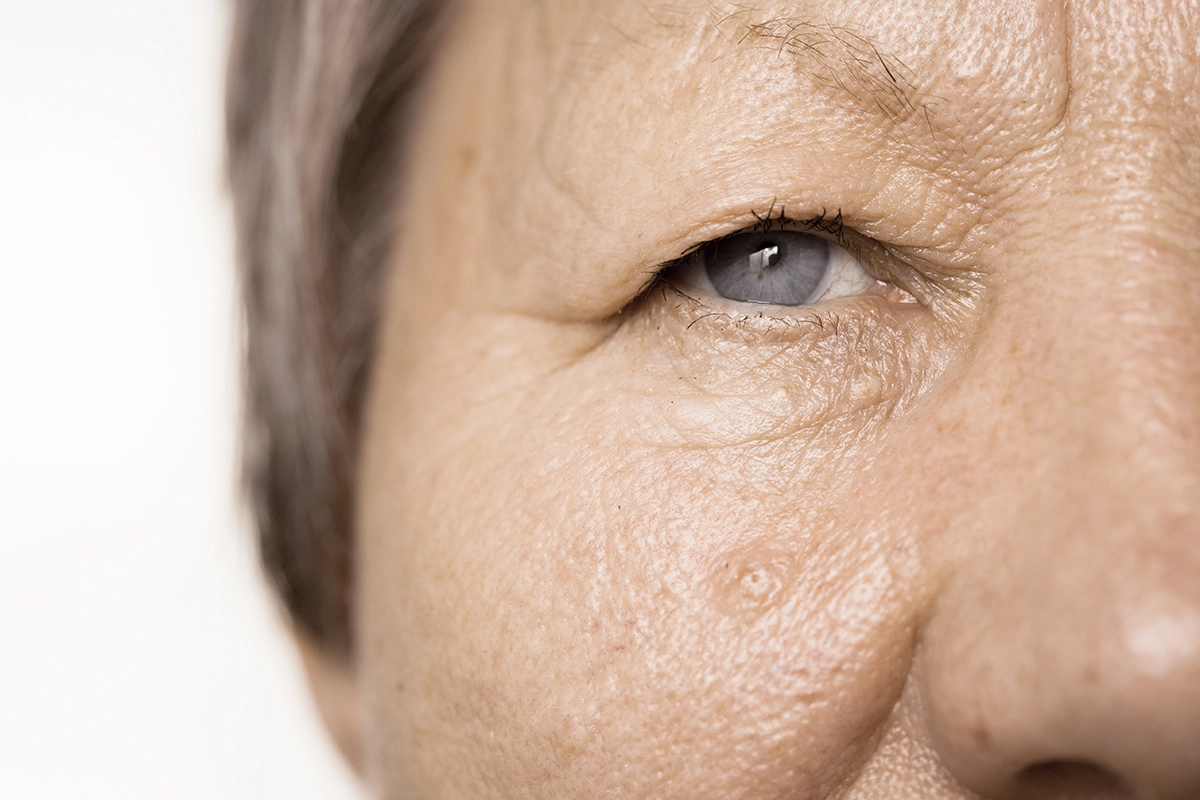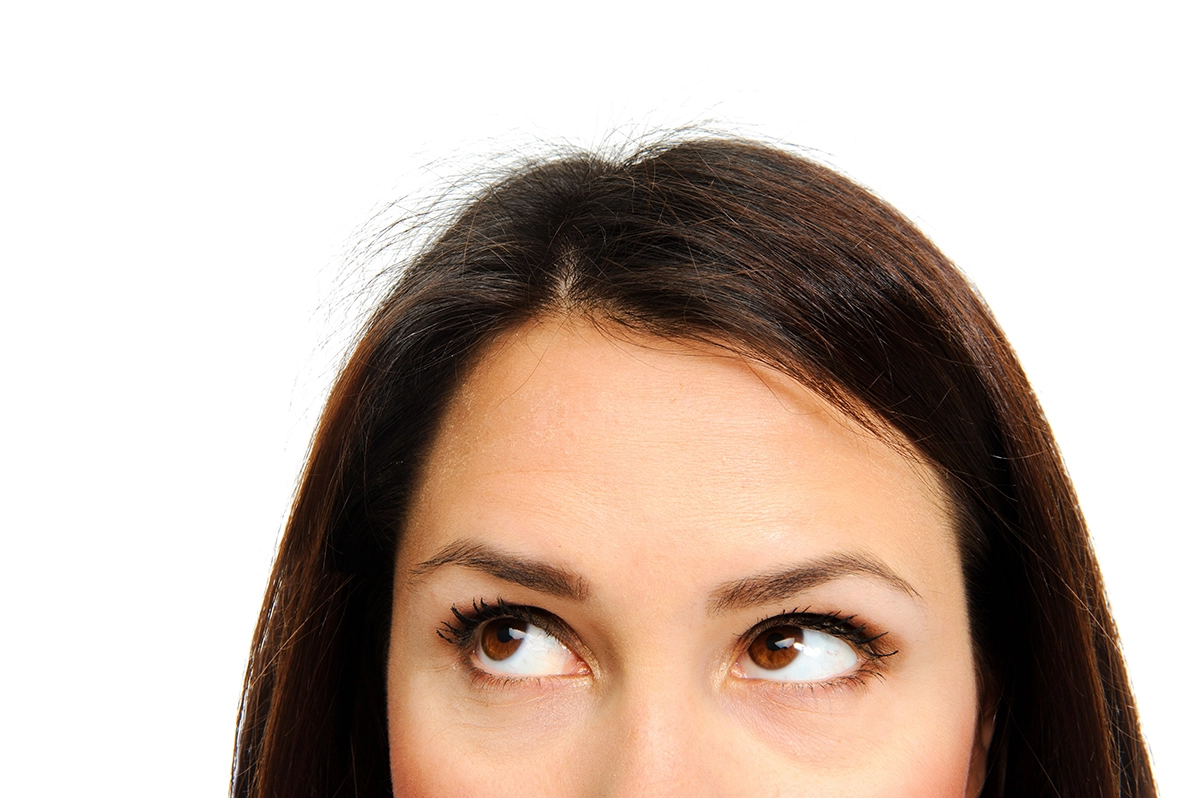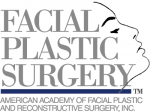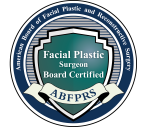Your Aging Eyelids
The eyes are a central aesthetic feature of the face and have often been described as the “window to the soul.” Our eyes allow us to see, but also to express emotion and connect with others.
Because of the delicate nature of eyelid skin, it is one of the first areas to display visible signs of aging. The combination of age, genetics, gravity, and environmental factors contributes to changes such as:
- Drooping or sagging eyelid skin
- Dark circles, under-eye bags, and puffiness
- Wrinkling or hollowing of the lower eyelids
- Obstructed vision from upper eyelid hooding

A youthful eye area conveys energy, alertness and attentiveness. As aging changes take place, the eyes can convey unintended signals like fatigue, stress, or anger.
Unfortunately, under-eye creams and skin care products only go so far in camouflaging these changes.
What Is Blepharoplasty (Eyelid Surgery)?
Blepharoplasty, also known as an eyelid lift, is an outpatient surgical procedure designed to correct age-related changes in the upper and/or lower eyelids. When performed correctly, blepharoplasty contributes to a rested and rejuvenated appearance while maintaining the natural shape and expression of the eyes.

What Can Blepharoplasty Achieve?
Blepharoplasty is generally well-known for addressing common concerns and rejuvenating and revitalizing a patient’s face including:
- Smoothing heavy or sagging skin on the upper eyelids
- Minimizing a tired or worn appearance to the eyes
- Improving peripheral vision for patients with eyelid hooding or skin folds
- Reducing excess lower eyelid skin and/or wrinkles
- Improving puffiness, eye bags, and dark circles
- Defining or refining an eyelid crease
Who Is a Candidate for Eyelid Surgery?
Patients bothered by sagging skin, puffiness, or fullness around the eyes may be good candidates for blepharoplasty. Ideal candidates are healthy individuals with typical signs of eyelid aging and realistic expectations about what surgery can achieve.

Who Is Not a Candidate for Eyelid Surgery?
Patients may not be suitable candidates if they have certain eye diseases or conditions including:
- Excessive dry eyes
- Untreated thyroid eye disease
- Recent eye surgery such as LASIK or cataracts
- Uncontrolled hypertension
- Patients unable to temporarily avoid anticoagulants
What Other Factors Determine Candidacy?
During your consultation, Dr. Boeckmann evaluates the eyelids and surrounding anatomy to determine the best treatment is selected. Certain medical conditions can mimic normal eyelid aging. If not identified prior to surgery, they may limit benefits, or predispose a patient to possible complications. Some of these conditions include:
- Brow ptosis: descent of the eyebrow or forehead tissues
- Blepharoptosis: dysfunction of the upper eyelid levator muscle
- Laxity of the lower lid tendon: loss of strength of the lower eyelid
How Is Eyelid Surgery Performed?
Upper Blepharoplasty Technique
Upper blepharoplasty is most commonly used to correct excessive skin or fat around the upper lids, address hooding, and restore a more rested, youthful appearance.
It is a relatively simple outpatient procedure usually performed with local anesthesia and light sedation. When performed alone, the surgery takes approximately one to two hours, but may take longer if combined with other procedures such as a facelift.
An incision is placed within the natural upper eyelid crease to allow for the removal of excess skin, muscle, and/or fat. Once healed, the site of the incision is virtually imperceptible to the naked eye.
After surgery, patients are discharged with instructions to use ointment along the incision line, as well as use cool compresses over the eyes to minimize bruising and swelling. Sutures are removed the following week, and most patients can return to work at that time.

Lower Blepharoplasty Technique
Lower blepharoplasty is frequently performed to address lower eyelid skin redundancy, correct eye bags, and tighten the lower eyelid muscle.
The lower blepharoplasty can be performed using incisions along the inside (transconjunctival) or outside (transcutaneous) of the eyelid. This allows for removal and/or repositioning of the excess fat of the lower eyelid to minimize lower eyelid puffiness, excision of redundant skin, and address dark circles (a.k.a. tear trough deformity) to create the appearance of more youthful, rested eyes.
Lower blepharoplasty takes about one hour or longer, depending on the patient’s eye area. Because this is a delicate procedure requiring meticulous care and attention to detail, careful execution is essential to achieving a natural, refreshed, rested appearance. Most patients are treated under general anesthesia for maximum comfort during the procedure.
Double Eyelid Surgery (Asian Eyelid Surgery)
One of the defining features between a person of Asian descent and a person of Western descent is the presence of an upper eyelid crease. Approximately 50% of individuals of Asian descent do not have an upper eyelid crease. While tremendous differences exist between different geographic regions in Asia, the main differences in the upper eyelid include: 1) absence of an upper eyelid fold/crease, 2) increased upper eyelid fat, and 3) the appearance of the epicanthal fold (medial eyelid skin).
Double eyelid surgery, also known as Asian blepharoplasty, defines an upper eyelid crease, and is among the most frequent facial plastic surgery procedures among Asian American patients.
The goal is not to Westernize the eyelid. As such, it is critical to understand an Asian’s perception of a beautiful eyelid and to be familiar with the anatomical differences and techniques to obtain the desired result.
With careful planning, execution, and appropriate postoperative care, Asian blepharoplasty results in high patient satisfaction while respecting ethnic identity.
View Our Blepharoplasty Before and After Gallery

Frequently Asked Questions About Blepharoplasty
How Should I Prepare for My Blepharoplasty Procedure?
Patients are advised to:
- Avoid smoking, vaping, and nicotine
- Discontinue aspirin, anti-inflammatory drugs, and certain supplements
- Take medications (eye drops, antibiotics) as directed
- Complete lab testing or a medical evaluation (if necessary)
What Is Recovery from Blepharoplasty Like?
Recovery varies depending upon the type of blepharoplasty performed. All patients experience some degree of minor bruising and swelling. Keeping the head elevated and applying intermittent cool compresses to the eyes for the first three days following the procedure helps minimize swelling and bruising. There is minimal pain following eyelid surgery. Any feelings of tightness or discomfort are easily treated with pain medication. With an upper blepharoplasty, most patients resume work and regular activities, including social events, in one week at the time sutures are removed. Lower blepharoplasty is generally associated with slightly more swelling and bruising, which can take several weeks to resolve.
Can I Exercise After Blepharoplasty?
Exercise should be avoided for the first two to three weeks after surgery. After three weeks, patients can gradually increase activity back to normal.
Will Blepharoplasty Change the Shape of My Eyes?
Blepharoplasty can improve the appearance of the eye area without changing the natural shape of the eyes. Most patients report that their eyes feel lighter and that they receive comments about looking more rested.
When Can I Wear My Contacts After a Blepharoplasty?
Patients should avoid wearing contact lenses for approximately three weeks after surgery.
Schedule a Consultation with Dr. Boeckmann
Dr. Jacob Boeckmann is double board-certified by the American Board of Otolaryngology—Head and Neck Surgery and the American Board of Facial Plastic and Reconstructive Surgery. His practice is focused exclusively on surgical and non-surgical facial restoration and aesthetic procedures, with an emphasis on achieving natural, balanced results.
He and his Orange County medical staff are dedicated to patient health, safety, and comfort. To learn more about blepharoplasty at Pacific Coast Facial Plastic Surgery, or to schedule a consultation, please contact our office.
You may also wish to view our patient reviews or learn about facial plastic surgery for men, including male blepharoplasty.
Located in Laguna Niguel, we treat patients in Newport Beach and surrounding South Orange County areas, as well as north to Beverly Hills and other Los Angeles County cities.



